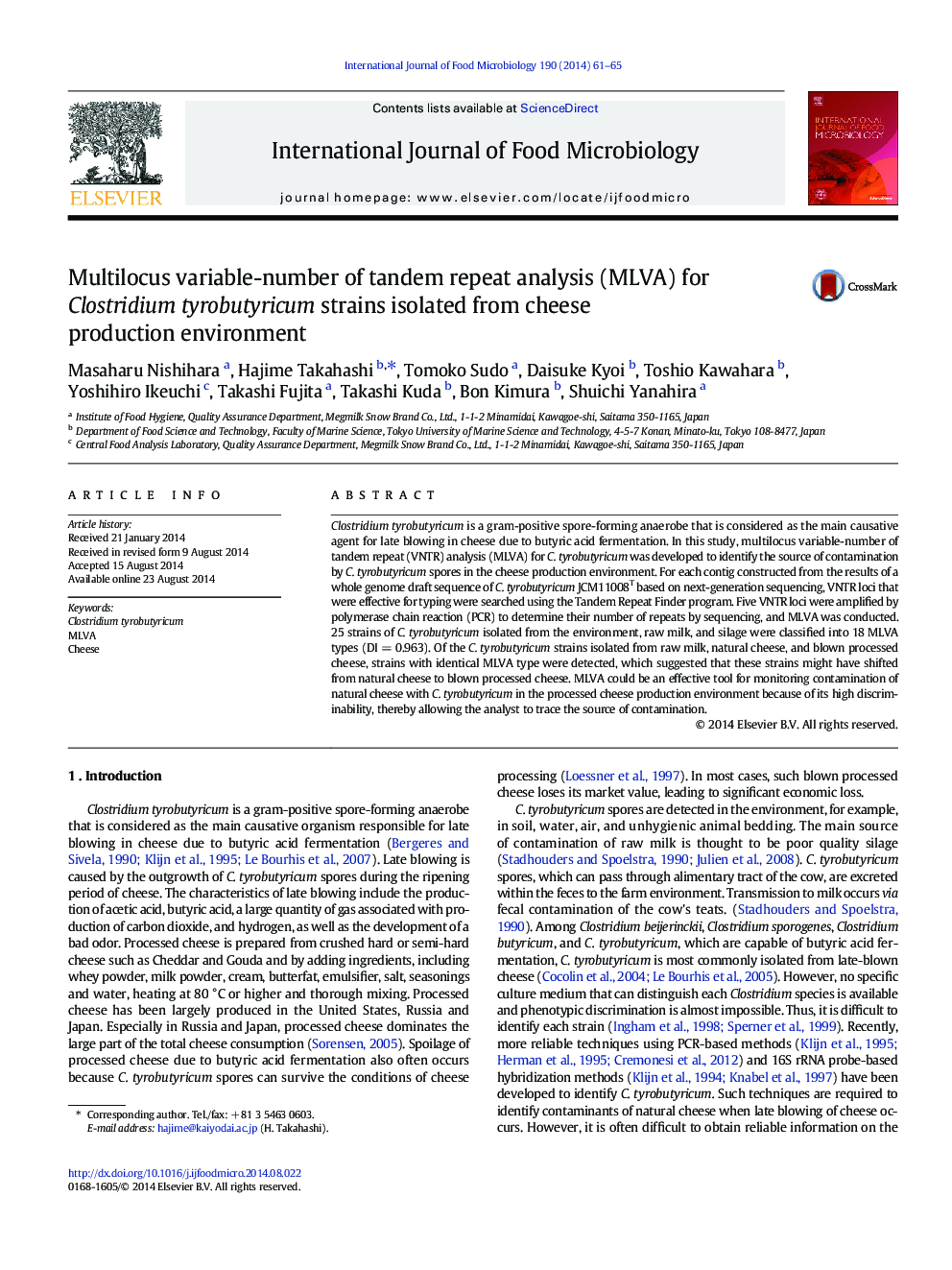| کد مقاله | کد نشریه | سال انتشار | مقاله انگلیسی | نسخه تمام متن |
|---|---|---|---|---|
| 4366808 | 1616593 | 2014 | 5 صفحه PDF | دانلود رایگان |

• Whole genome draft sequence of C. tyrobutyricum was determined by NGS.
• MLVA for C. tyrobutyricum was developed.
• This newly developed MLVA method has high D.I. value (0.96).
• This MLVA could be an effective tool for monitoring C. tyrobutyricum in cheese.
Clostridium tyrobutyricum is a gram-positive spore-forming anaerobe that is considered as the main causative agent for late blowing in cheese due to butyric acid fermentation. In this study, multilocus variable-number of tandem repeat (VNTR) analysis (MLVA) for C. tyrobutyricum was developed to identify the source of contamination by C. tyrobutyricum spores in the cheese production environment. For each contig constructed from the results of a whole genome draft sequence of C. tyrobutyricum JCM11008T based on next-generation sequencing, VNTR loci that were effective for typing were searched using the Tandem Repeat Finder program. Five VNTR loci were amplified by polymerase chain reaction (PCR) to determine their number of repeats by sequencing, and MLVA was conducted. 25 strains of C. tyrobutyricum isolated from the environment, raw milk, and silage were classified into 18 MLVA types (DI = 0.963). Of the C. tyrobutyricum strains isolated from raw milk, natural cheese, and blown processed cheese, strains with identical MLVA type were detected, which suggested that these strains might have shifted from natural cheese to blown processed cheese. MLVA could be an effective tool for monitoring contamination of natural cheese with C. tyrobutyricum in the processed cheese production environment because of its high discriminability, thereby allowing the analyst to trace the source of contamination.
Journal: International Journal of Food Microbiology - Volume 190, 3 November 2014, Pages 61–65